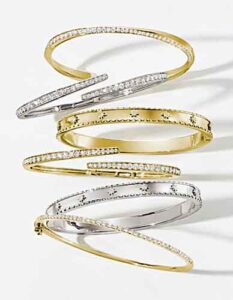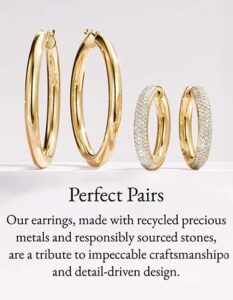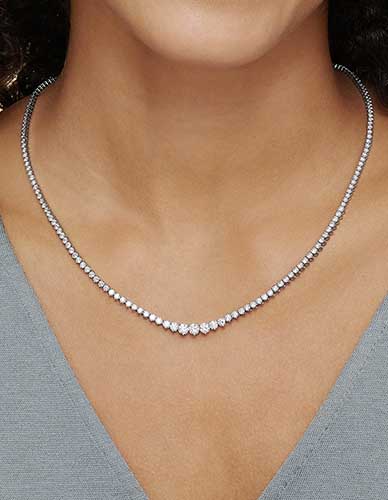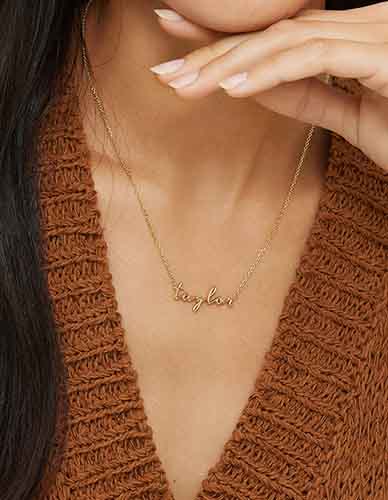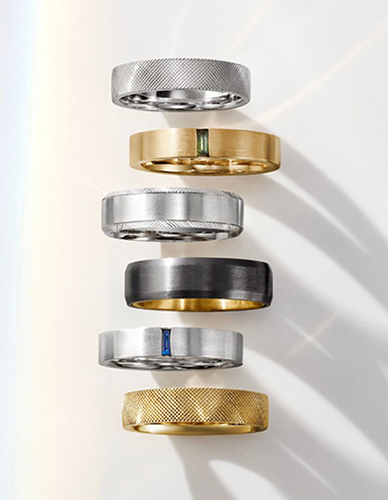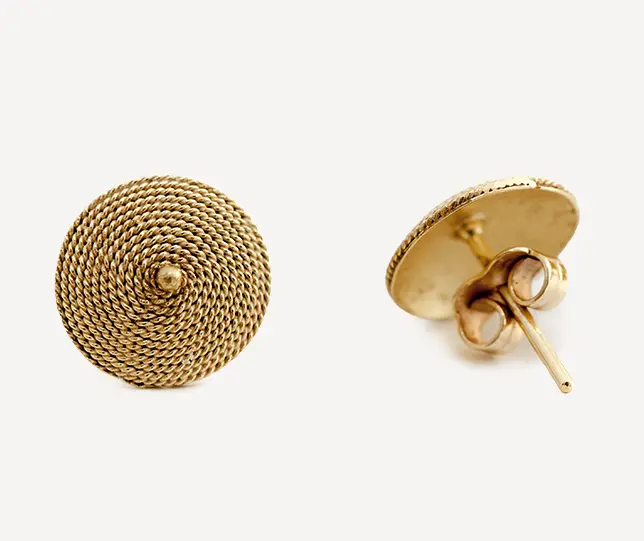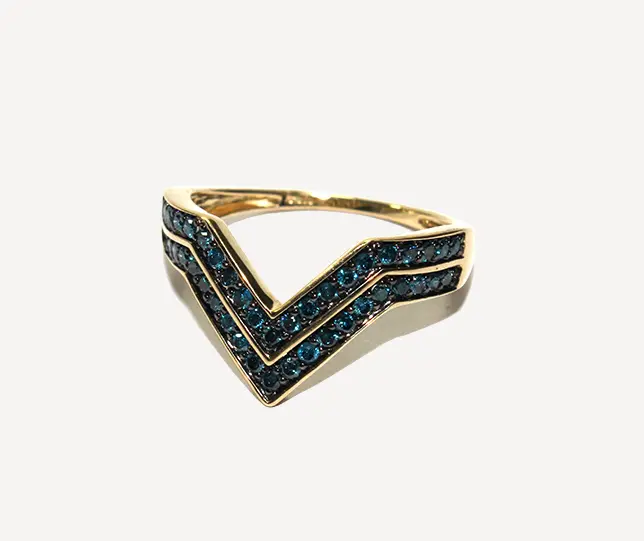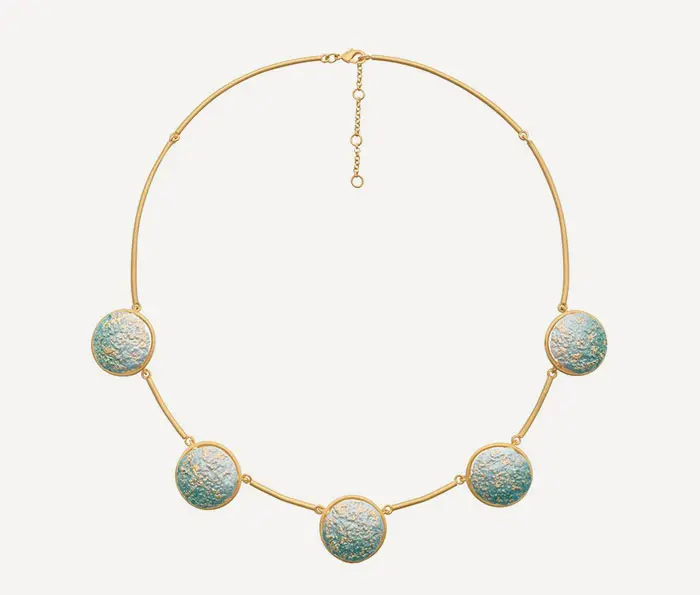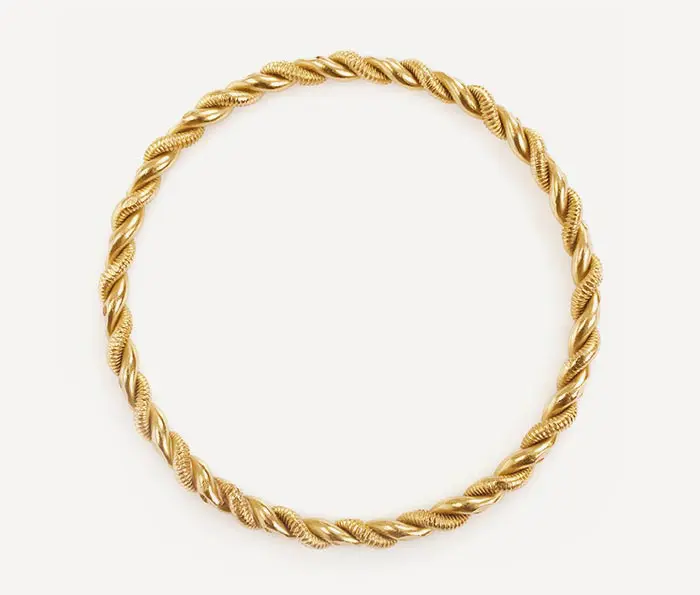Sapphire Guide
Learn the ins and outs of sapphires, from mineral composition to origin, color, meaning, and more.
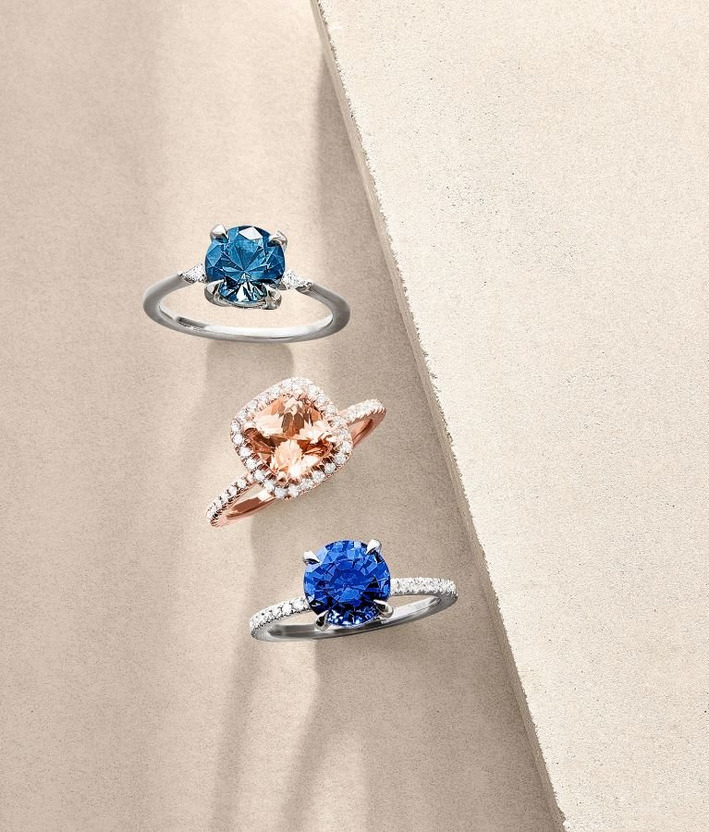
Sapphire Guide
Learn the ins and outs of sapphires, from mineral composition to origin, color, meaning, and more.
What is a Sapphire?
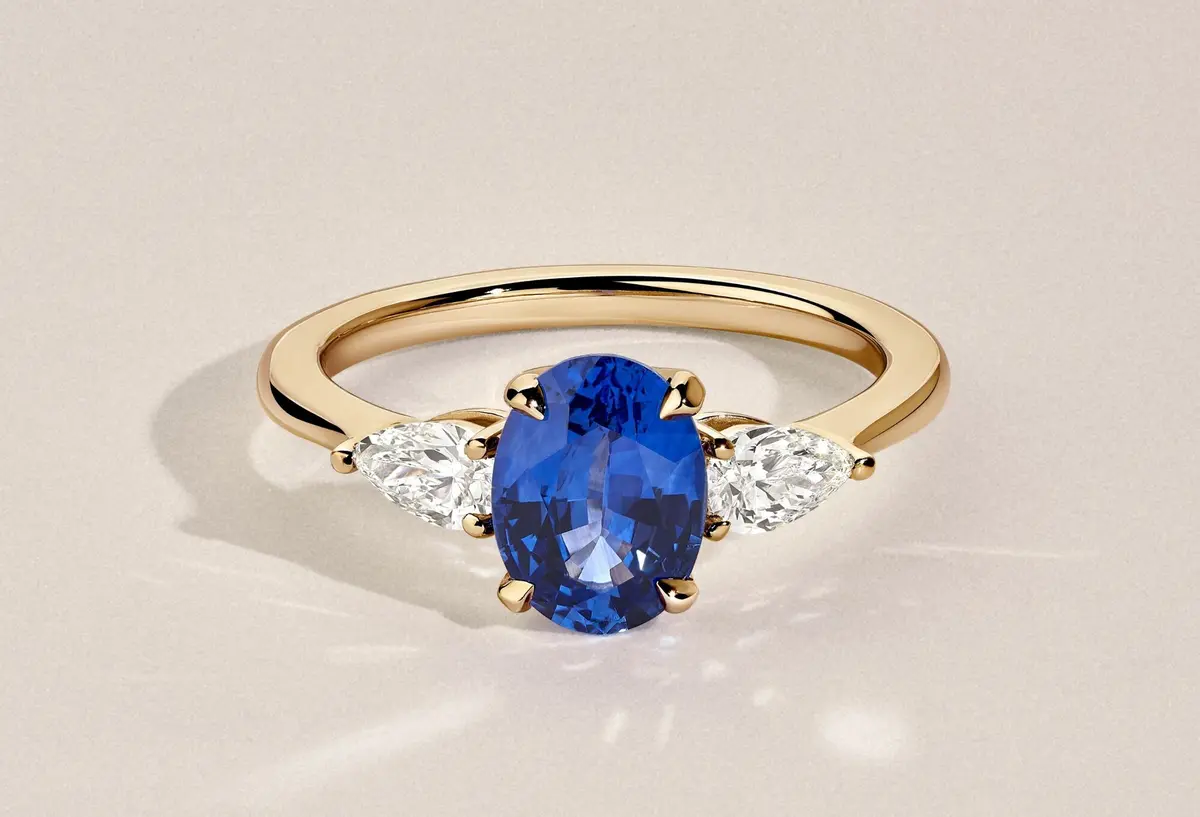
Sapphire is a precious gemstone comprised of the mineral corundum and trace elements like iron, titanium, cobalt, boron, or silicon. While the most well-known version of sapphire is blue, it can be nearly any color (besides red, as gemstones with red corundum are classified as rubies). Beloved for centuries for its beauty and durability, sapphire is a mainstay in all types of jewelry, from engagement rings to earrings.
Sapphire Types
Natural Sapphires
Over millions of years, natural sapphires form deep in the Earth, usually in metamorphic or igneous rocks. Each natural sapphire crystal features a unique size, shape, and color. They form in various colors, from blue to pink, purple, green, orange, teal, yellow, peach, white, and beyond.
Lab Grown Sapphires
Lab sapphires are grown with precision by scientists utilizing advanced technology. They feature the same chemical properties as natural sapphires but often have a more consistent color and fewer flaws as they’re grown precisely in controlled environments. Like natural sapphires, they also come in a rainbow of colors.
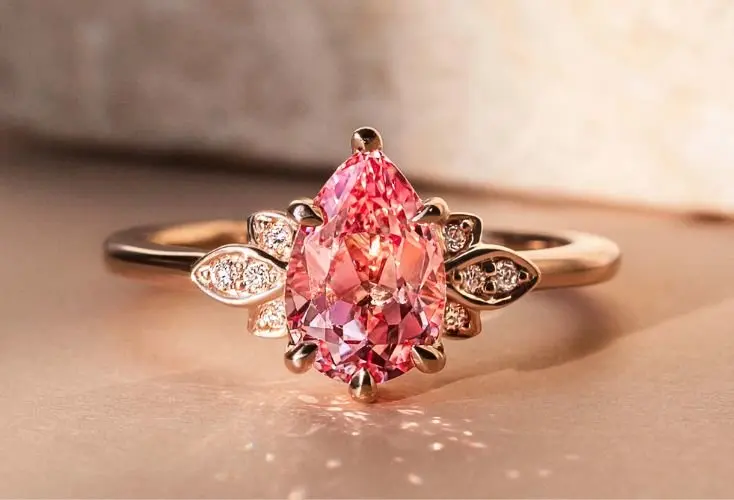
Sapphire Meaning
Sapphire has been symbolic of nobility, sincerity, truth, and faithfulness to various cultures for centuries. In ancient Greece and Rome, kings and queens believed that blue sapphires would protect them from envy and harm. In the Middle Ages, blue sapphires symbolized heaven. Today, sapphire is known to symbolize royalty.
Sapphire Properties
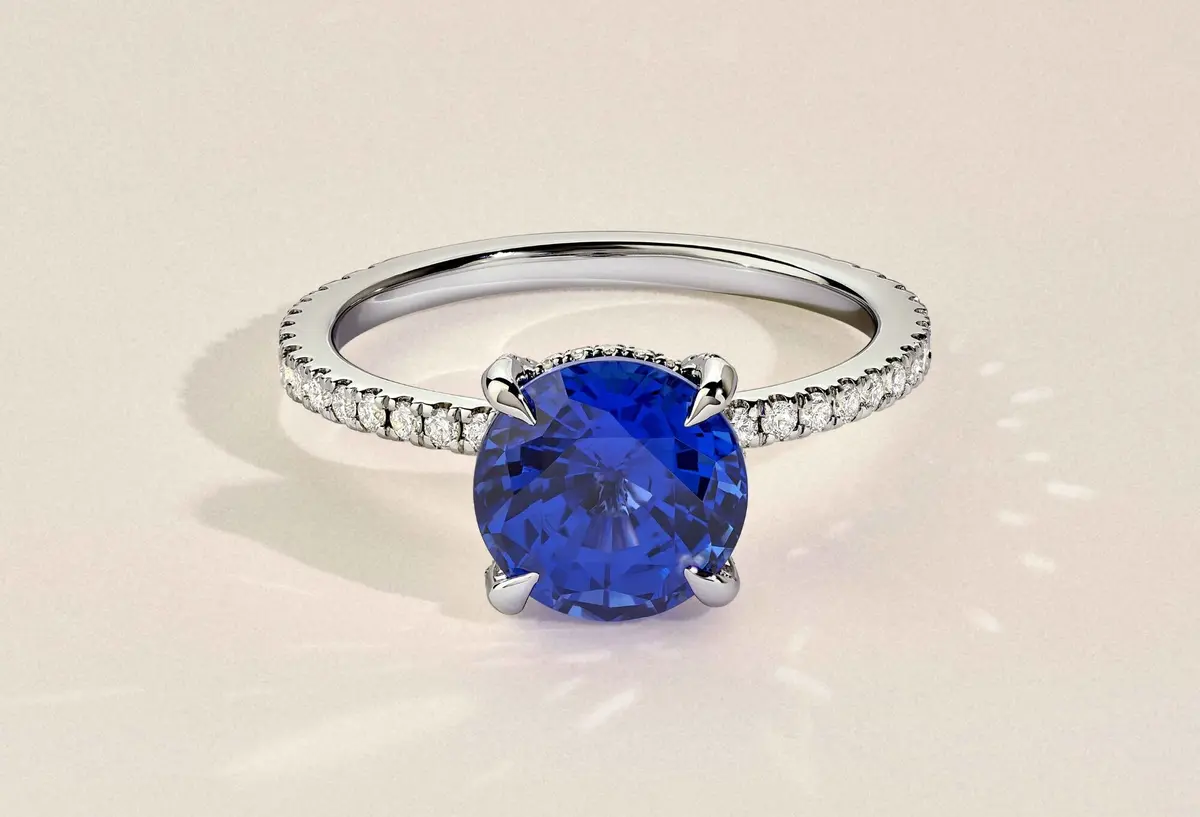
Mohs Hardness
9
Mineral
Corundum
Color
All colors except red
Refractive Index
1.762 to 1.770
How to Choose a Sapphire
There are many factors to consider when choosing the right sapphire for you. Color and shape are the two most important factors visually — but it’s essential to learn about cut, color, clarity, and more to pick the perfect piece.
Color
As mentioned, sapphire color ranges far beyond the well-known blue. Due to trace minerals within sapphires, such as boron or iron, they can feature nearly any color besides red. This includes:
- Pink
- Purple
- Violet
- Yellow
- Orange
- Green
- White
- Brown
- Black
- Grey
- Blue
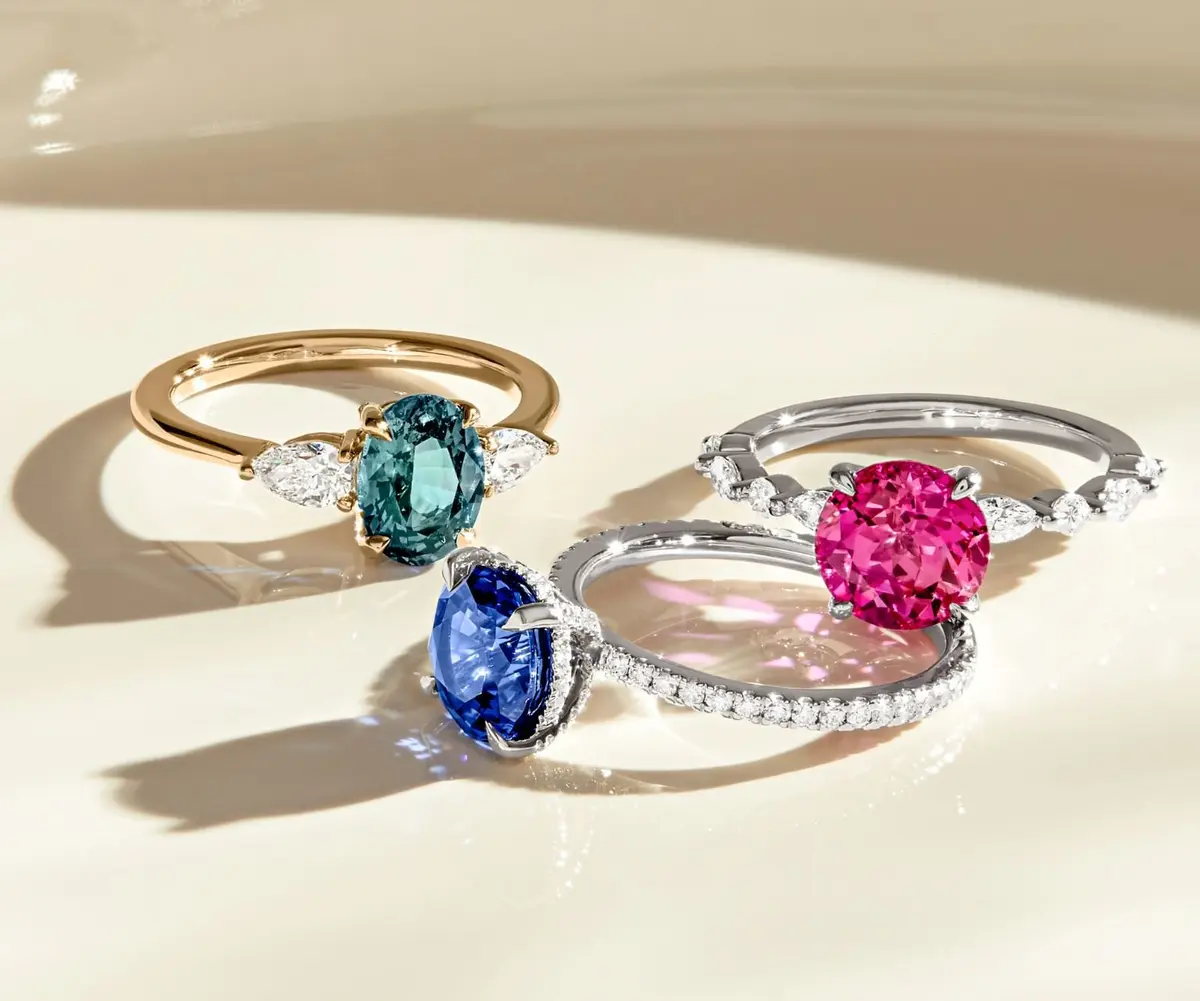
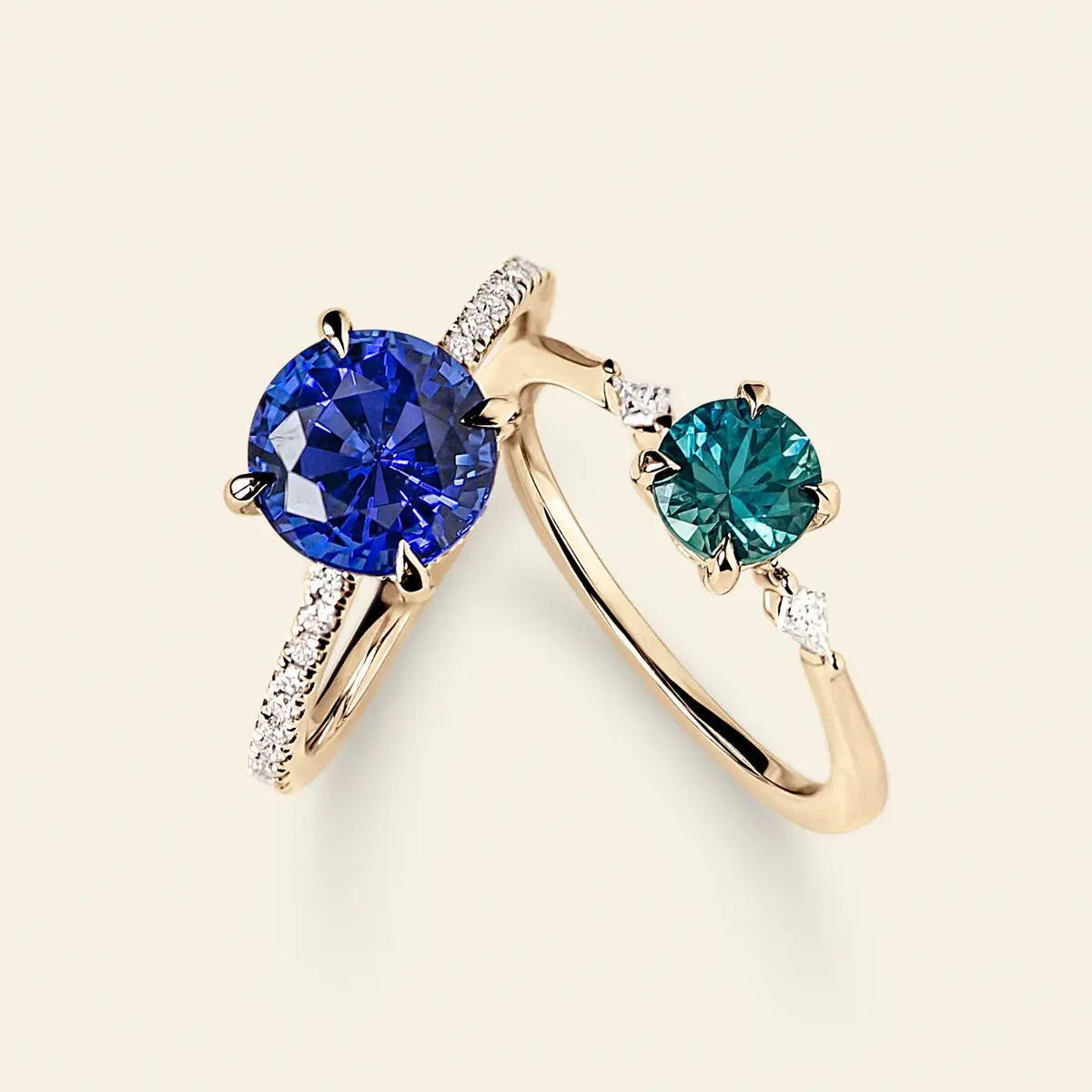
Shape
Shape refers to the external geometric outline of the gem. Sapphires can be cut into nearly any shape, from more traditional shapes such as round or princess to trillion, kite, and beyond.
Cut
Sapphires are cut to maximize size and color saturation through the table. This means that sometimes they may be cut with a heavier or shallower pavilion, or with a more unique cut than a traditional one.
Clarity
Natural sapphires are typically included and feature unique characteristics. Lab sapphires, on the other hand, are typically inclusion-free and feature a generally uniform look.
Carat Weight and Size
Sapphires are typically referenced in millimeter size instead of carat weight. Though carat weight for a given sapphire may be displayed, it’s more informational to reference actual size – as diamonds and other gemstones retain differing densities (and therefore different carat weights at the same millimeter measurement).
Price
Sapphires are typically valued based on their rarity, color, color saturation, clarity, size, and origin.
Treatment
Sapphires can be left as-is or heat-treated to improve color, clarity, and overall appearance. Some natural sapphires are found closer to thermal venting in the Earth, which produces exceptional color through natural heating. Experts can mimic this natural process by heating sapphires not found in these locations.
Most Brilliant Earth sapphires are heat-treated, as is industry standard with almost all available today. We also carry un-heated sapphires.
Origins
We work with a small number of exclusive gemstone suppliers who share our values and source from specific countries that focus on land protection, safer mining, and improved working conditions.
Montana
The Montana mine operators we work with focus on traceability, respect, and responsibility in protecting the land and the environment.
Sri Lanka
Governmental regulations in Sri Lanka promote low-impact mining and support land restoration after mining is complete. The miners in Sri Lanka we work with employ age-old techniques that minimize environmental damage.
Australia
Internationally recognized policies in Australia protect the well-being of mine employees by promoting health and safety in the workplace as well as competitive wages and benefits.
Australia’s regulations, land restoration efforts, and minimized impacts on water quality also protect ecosystems and indigenous land. Companies must also pay a fee that is only returned after land used for mining meets or exceeds its original condition.
Certification
The jewelry industry has yet to standardize a consistent grading scale for sapphires. Though several testing agencies provide detailed gem grading reports, they fall short when classifying sapphires. The reports, limited to color grading, are not as systematic, methodical, and detailed as a diamond grading report, and they vary significantly from agency to agency. Unlike diamonds, where the cut is one of the most important qualities, the color of a sapphire is arguably the most important factor in determining its quality and value.
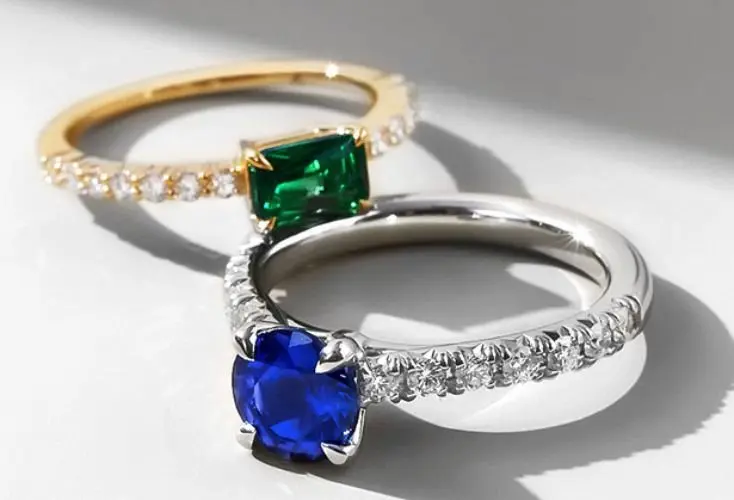
Sapphire Facts
- The most expensive blue sapphire ever sold is the Blue Bell of Asia. In 2014, it sold for over $17 million.
- Some sapphires can feature more than one color (known as bi-color or parti-color). Others are color-change sapphires, that change in hue in different lighting.
- The most famous sapphire is the one presented to Lady Diana Spencer by Prince Charles as her engagement ring.
Popular Gemstone Engagement Rings
Discover our most popular settings to pair with sapphires.
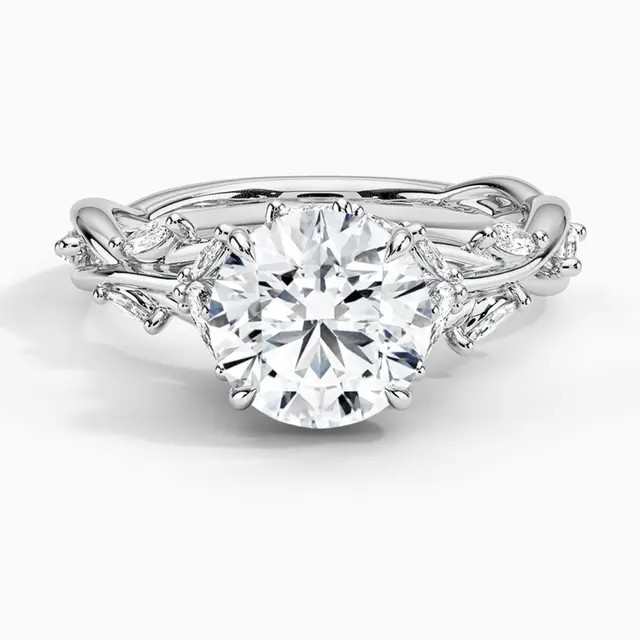
Secret Garden
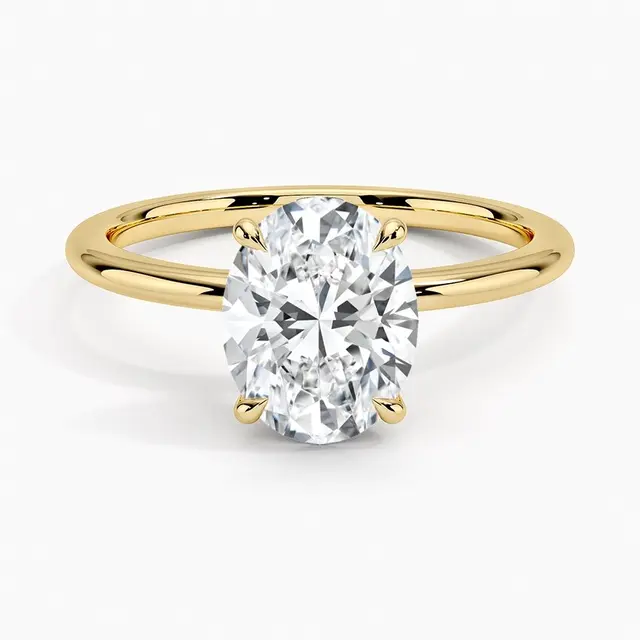
Petite Elodie Solitaire
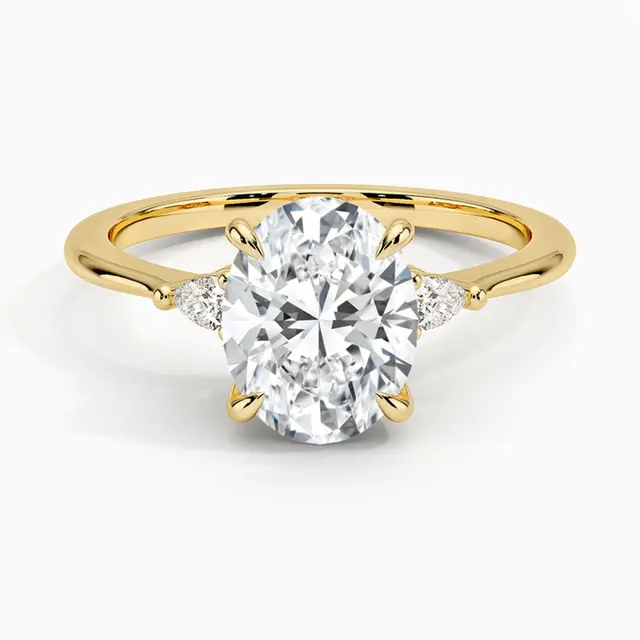
Aria Three Stone
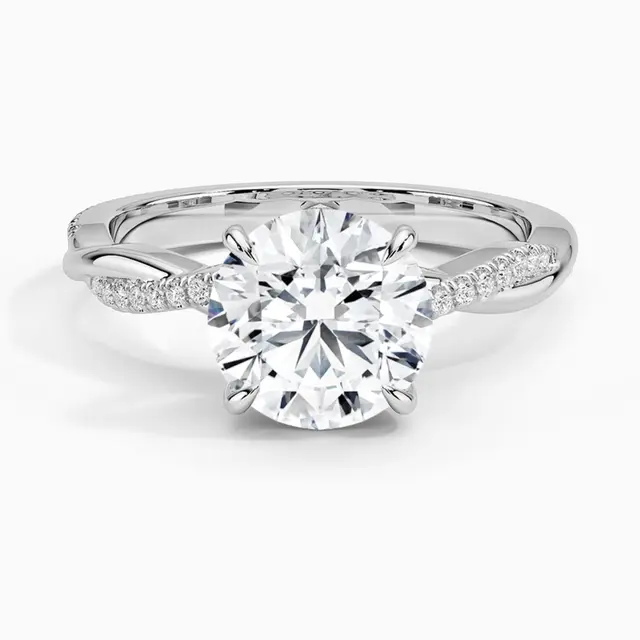
Petite Twisted Vine
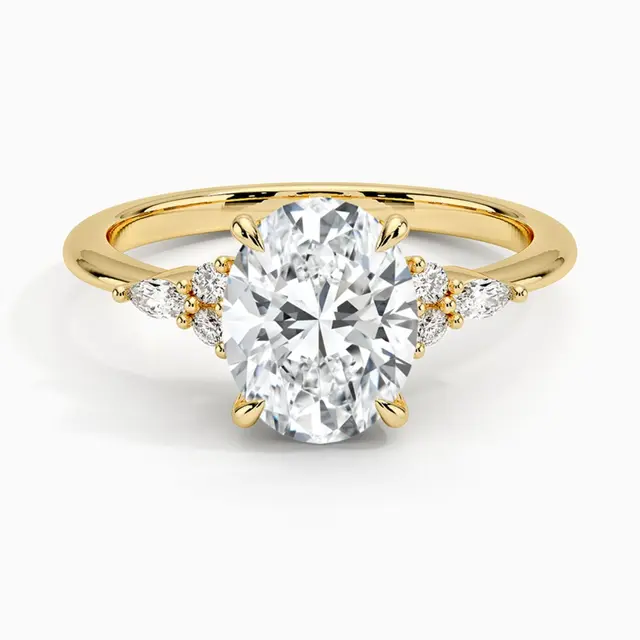
Nadia
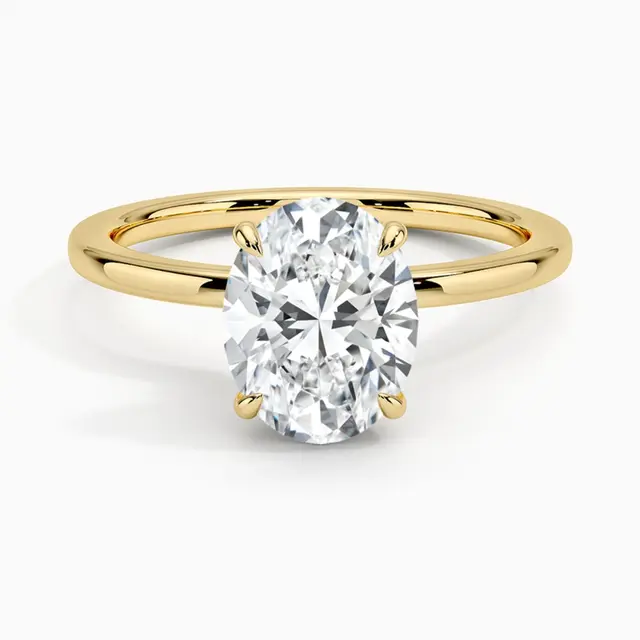
Secret Halo
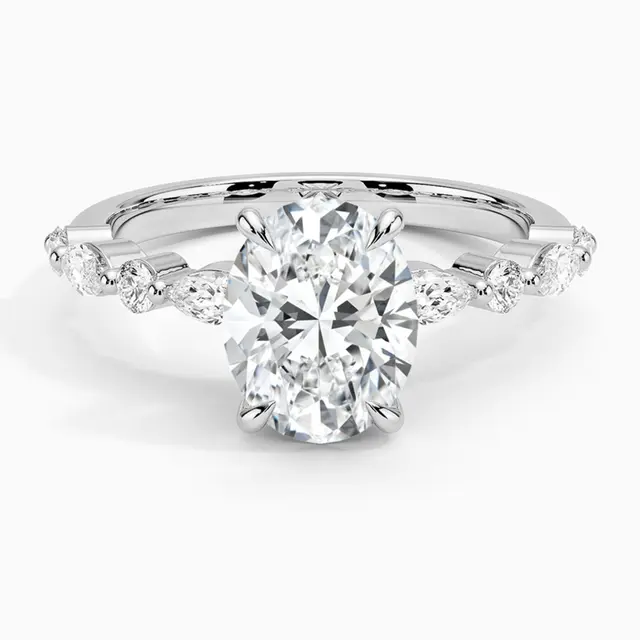
Versailles
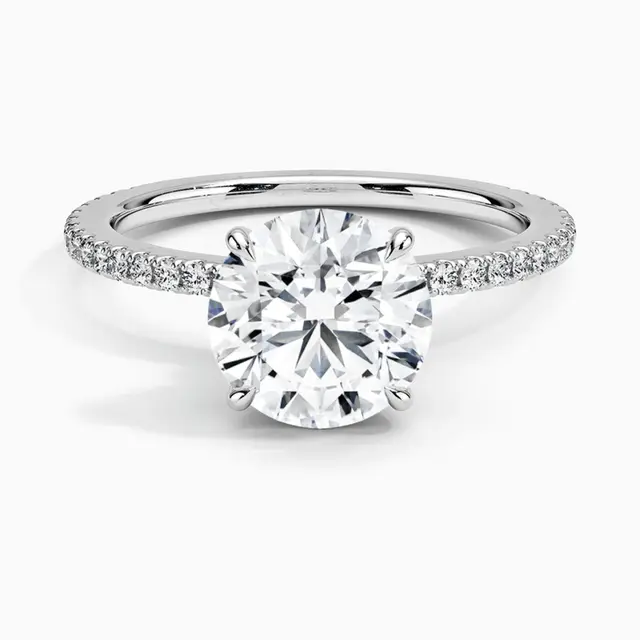
Demi
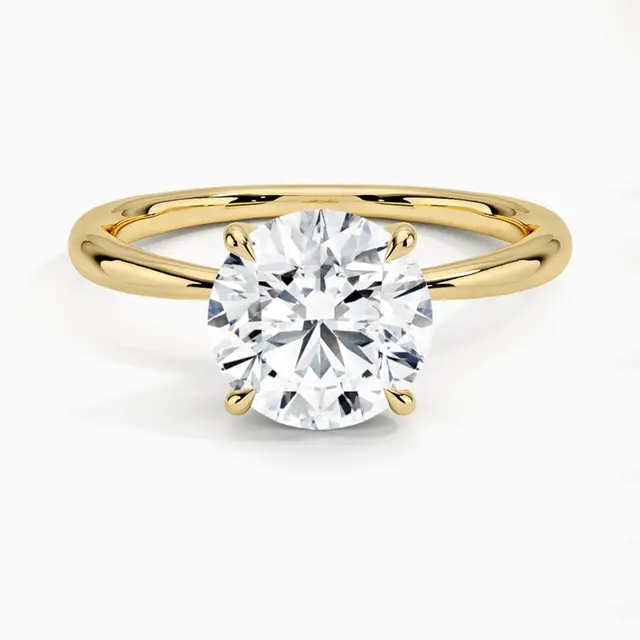
Freesia Solitaire
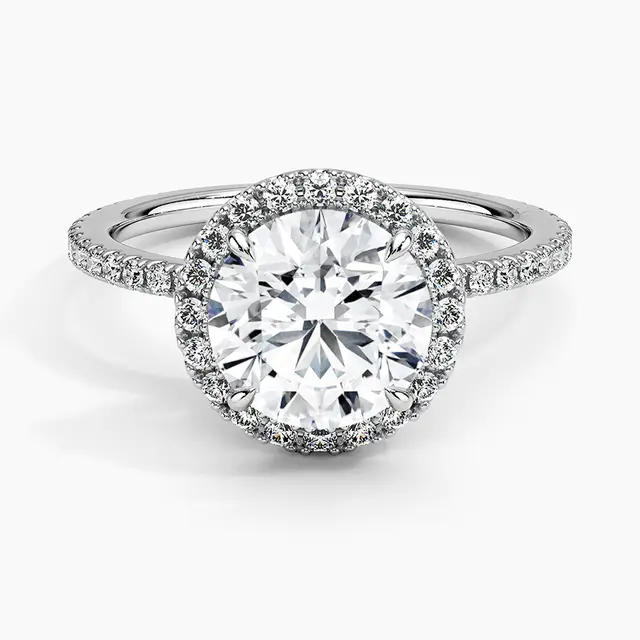
Waverly Halo
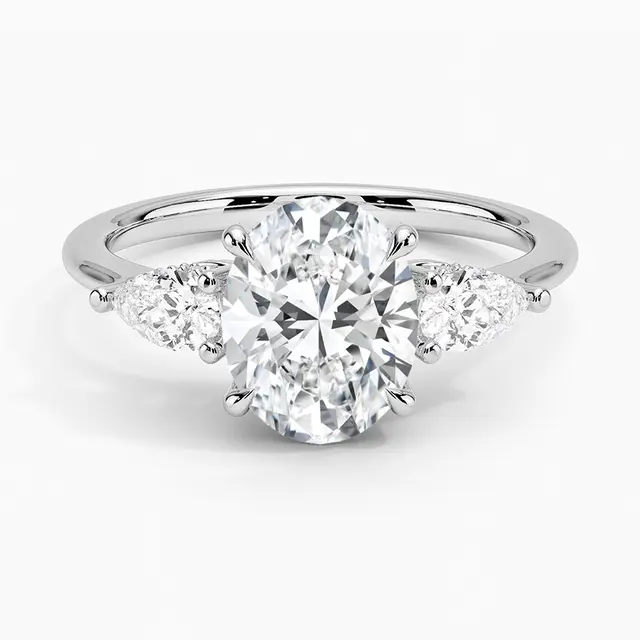
Adorned Opera Three Stone
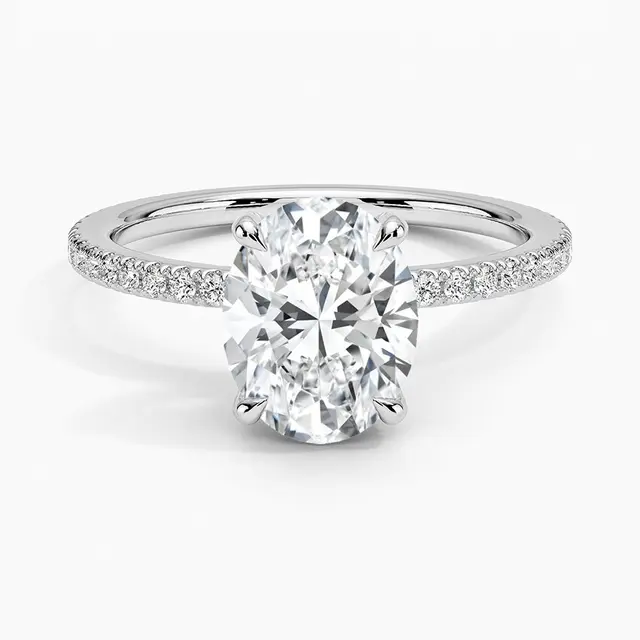
Luxe Viviana
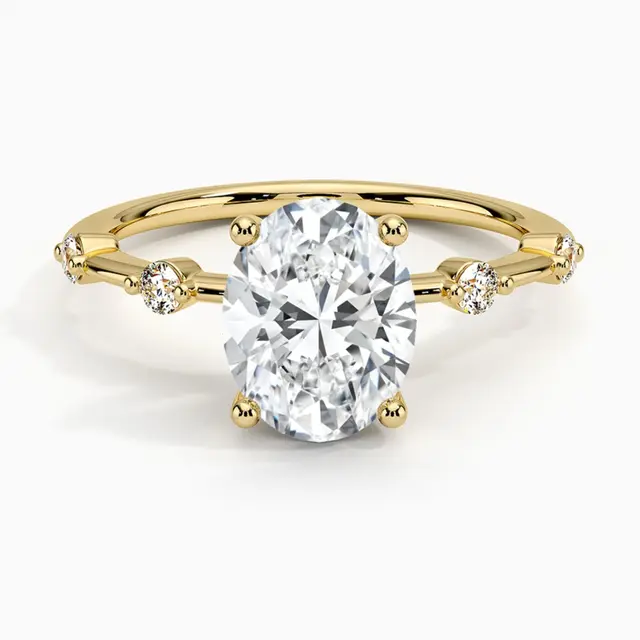
Aimee
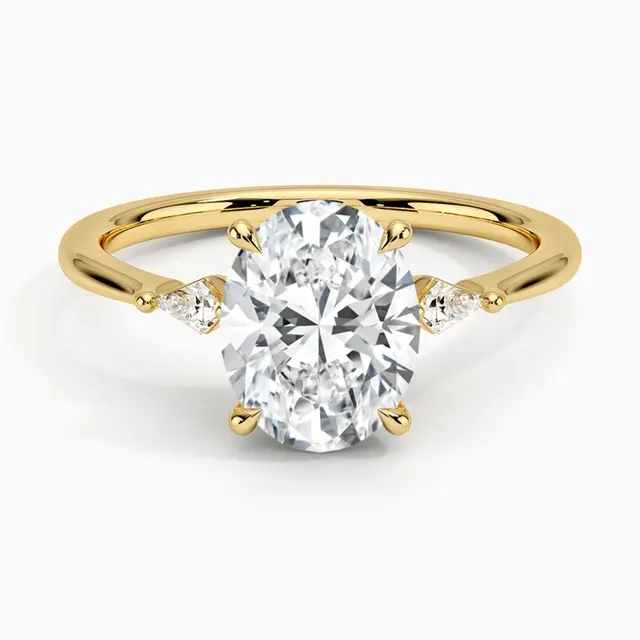
Petite Cometa Three Stone
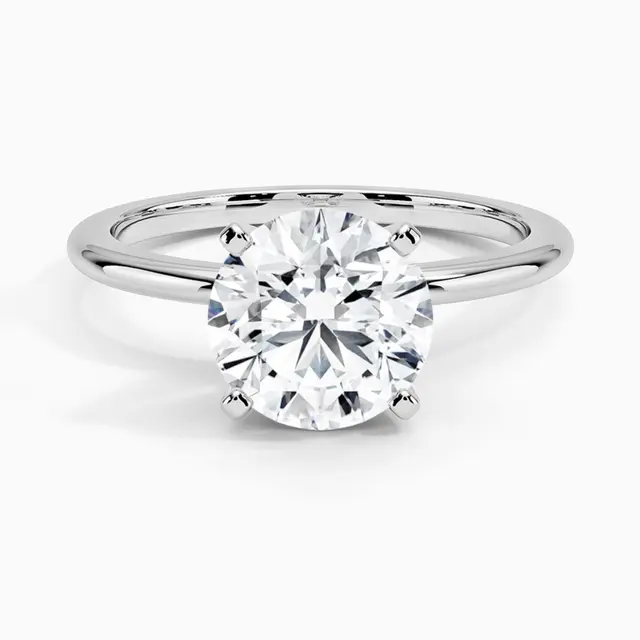
Four Prong Petite Comfort Fit
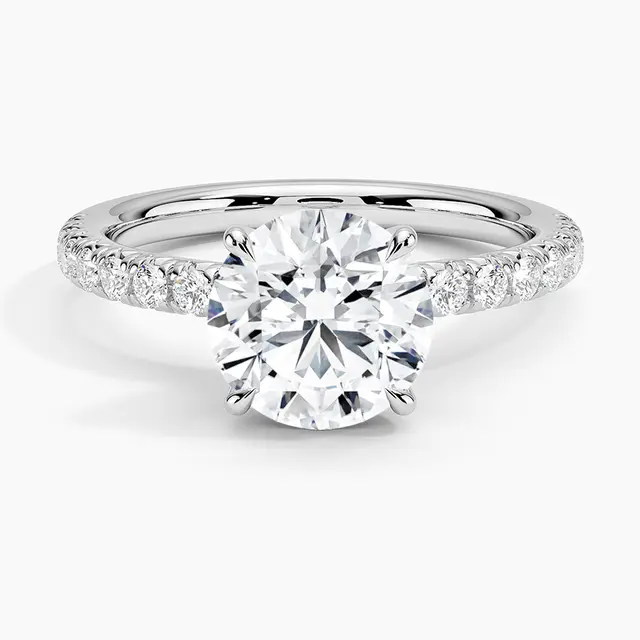
Amelie
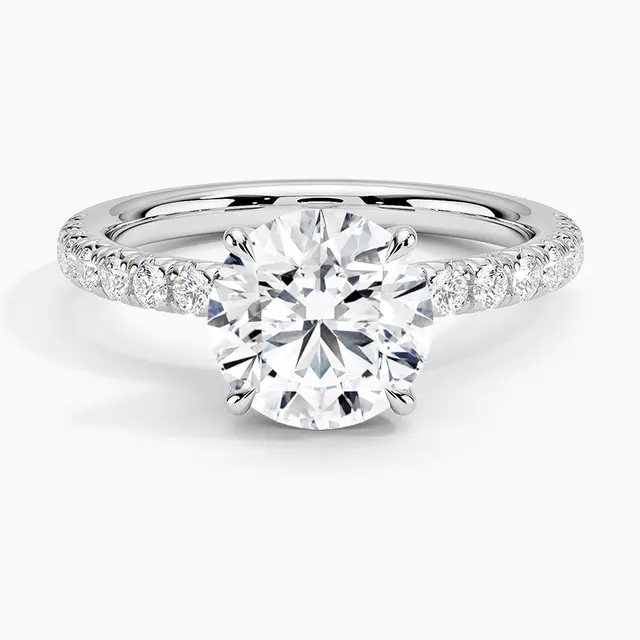
Camellia Milgrain
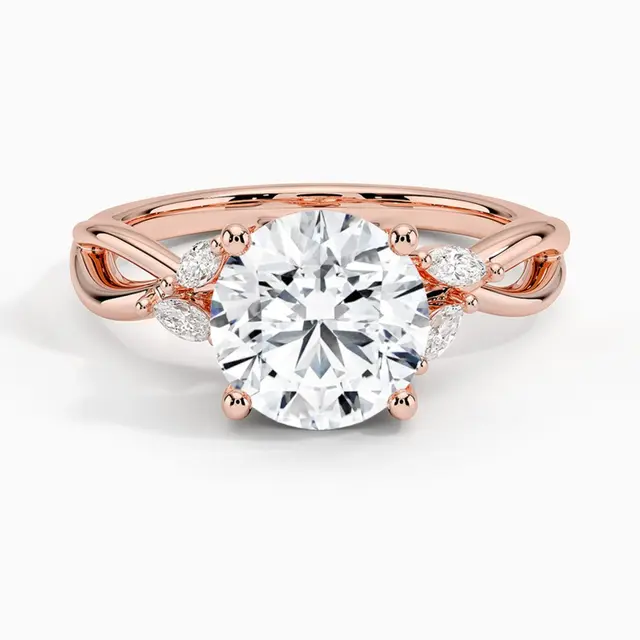
Willow
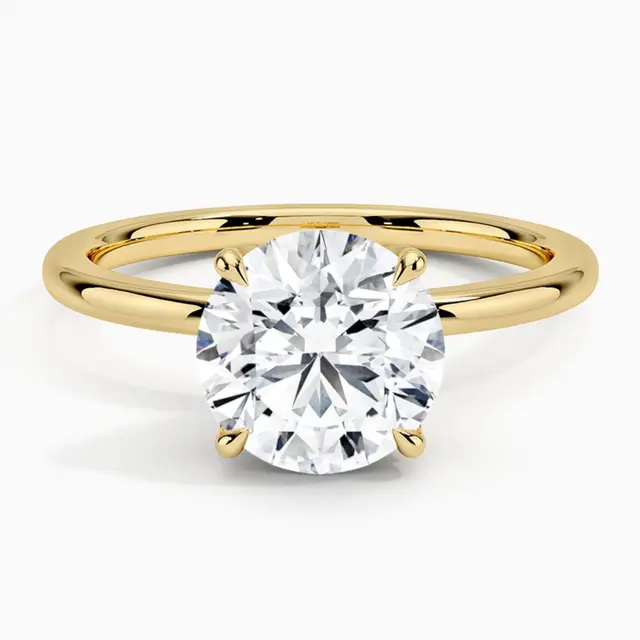
Petal
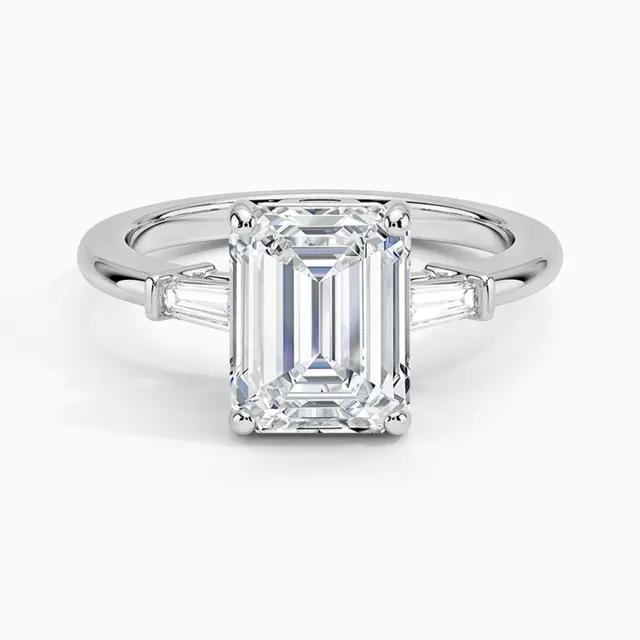
Tapered Baguette Three Stone
Sapphire FAQs
Ruby and sapphire are both comprised of the same mineral, corundum. Red corundum produces rubies, and other forms of corundum produce blue and other color variations such as pink sapphires.
It is difficult for the untrained eye to distinguish between a natural and a lab sapphire. The best way to determine if your gem is natural or lab is to bring it to an expert gemologist or have it laboratory tested to confirm its origins.
September is the birth month represented by sapphire.
Yes, sapphire gemstones are comprised of the mineral corundum.
Natural sapphires form deep within the Earth. Lab sapphires are grown to precision by experts with advanced technology.
Star sapphires are a variety of sapphires that feature a unique reflection that gives the effect of a star within the gem. This reflection, called asterism, is caused by small inclusions within the gemstone.
Yes, sapphires are rare. The rarest are Padparadscha sapphires that feature an almost sunset-like color blend of pinks and oranges.
How hard are sapphires compared to diamonds?
Sapphires are softer than diamonds on the Mohs Scale of Hardness. While diamonds rank at 10 and are the hardest naturally occurring mineral on Earth, sapphires rank at 9. They are, however, still perfectly suitable for everyday wear.
Sapphires are softer than diamonds on the Mohs Scale of Hardness. While diamonds rank at 10 and are the hardest naturally occurring mineral on Earth, sapphires rank at 9. They are, however, still perfectly suitable for everyday wear.
Sapphire is very durable and suitable for jewelry you wear every day, such as an engagement ring, necklace, or bracelet. To retain your sapphire’s beauty and durability, we recommend regular cleaning and proper care – such as taking it off for any strenuous activity or when swimming, showering, or washing dishes. Read our Sapphire Care Guide to learn more.
Laboratory testing is the best way to confirm whether or not a sapphire has been heat treated. Expert gemologists can also tell by examining inclusions.
An unheated sapphire has undergone no heat treatment to enhance its natural color or improve clarity imperfections.
Both sapphire and moissanite are beautiful gemstones — it all depends on your personal preference. White sapphires, the closest visually to moissanite, generally offer less scintillation than their moissanite counterparts, however. To learn more about moissanite, read our Moissanite Guide.

